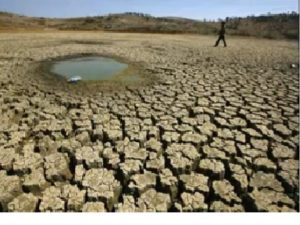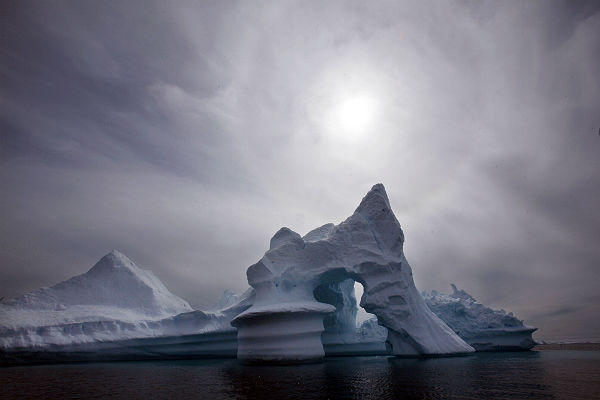Rising CO2 emissions from the burning of fossil fuels has resulted in extreme weather and economic danger. A revenue neutral fee and dividend plan could spur a clean energy industrial revolution and reduce global warming.


The Longer We Wait on Global Warming…
By Bryan Killett
Originally Published in the Pasadena Star News
Atmospheric CO2 is approaching 400 parts per million for the first time in millions of years. That’s more than a 40 percent increase since the 19th century. It’s currently increasing at least 10 times faster than during the previous record high, which by strange coincidence was set right before the end-Permian extinction, 250 million years ago.
A mountain of evidence has convinced the overwhelming majority of scientists that our skyrocketing CO2 emissions have very likely caused most of the global warming since 1950. What does this mean for Southern California?
The National Academies recently projected about 1 to 5 feet of sea level rise along the Southern California coast by 2100. This will accelerate the erosion of our beaches, flood coastal properties, increase the salinity of coastal farmland and make winter storm surges punishing.
The increased chance of extreme heat waves increases drought severity and frequency, such as those in 2005 and 2010 in the Amazon, and 2011 in Texas and the Midwest. The study by Famiglietti et al. in 2011 has shown that California’s Central Valley lost over four cubic miles of groundwater from 2003 to 2010 for irrigation. This dramatic withdrawal from our great underground water reservoirs points out the need for sustainable, robust water management now and into the future.
Heat waves, droughts and wildfires will be more severe in continental interiors, such as during the 2010 Russian wheat crisis. This is disturbing because much of America’s food is grown in the Midwest. Our CO2 emissions are also acidifying the oceans, which has been linked to marine extinctions even during a relatively minor CO2 excursion like the Paleocene-Eocene Thermal Maximum, 55 million years ago.
Over a billion people depend on seafood. We need resilient food security to feed our recklessly growing population.


Solutions to Reduce CO2 Emissions: A Clean Energy Economy
Since 2001, more than a dozen national science academies have repeatedly urged world leaders to reduce CO2 emissions, without much success. As individuals, we must prepare for and slow down climate change.
Many solutions are available to homeowners: improved insulation, more efficient appliances, white roofs, turf-removal programs, solar thermal and solar electric panels. But what about apartment residents like me, who by default use about 58 percent coal power?
My electric company, Pasadena Water and Power, has a green power program, which allows customers to specify that their power comes from renewable sources. This only adds 2.5 cents per kilowatt-hour, which is a cheap but effective way to show power companies that we care about supporting clean energy. Pasadena residents with a garage could then use 100 percent wind power to charge a Nissan Leaf or Ford Focus Electric. The technology is improving and the cost is decreasing.
My family doesn’t like CFL bulbs despite their efficiency because they turn on slowly and have poor light quality. However, I recently bought several Phillips Ambient LED 12.5W bulbs. They look bizarre until they’re turned on, then they quickly shine just like dimmable 60W incandescent bulbs. At $23, they’re expensive, but should repay that investment through lower electricity bills during their six-year warranty period.
Individual actions aren’t enough; we desperately need real leadership at the national level. At the very least, we should stop subsidizing the fossil fuel industry.
We should also treat the waste from coal/gas power plants the same as waste from nuclear plants. Government regulations force nuclear plants to pay for waste disposal up front, but coal/gas plants get to treat our atmosphere as a free sewer. The Citizens Climate Lobby supports the Save Our Climate Act (SOCA) which calls for a gradually increasing fee on carbon-based fuels, with most revenue being returned to individuals and some revenue committed to reducing the federal debt.
A revenue-neutral carbon fee and dividend plan like SOCA would help jumpstart a new industrial revolution by harnessing the power of the market to innovate our way out of this mess. Fiscal conservatives should note that the longer we wait, the more invasive regulations we’ll need to retain some semblance of our current standard of living. Many Republicans should also note that SOCA will make nuclear power more competitive because nuclear plants only emit a few percent of the CO2 from equivalent coal plants, even considering mining and enrichment of uranium, containment dome curing and waste recycling.
Watch Full Program on PBS. See more from EARTH: The Operators Manual.
In the freely-available video series “Earth: The Operators’ Manual,” Richard Alley explains that transitioning to clean energy will cost about as much as building our sewer system. I doubt that many people would give up indoor plumbing to save a few percent of GDP, so I’m baffled that so many people are willing to risk the water and food security of the next generations just to save a few percent of GDP. Personally, I think we should try to buy some time for the next generations to clean up our mess.
Bryan Killett is a geophysicist living in Pasadena, California.









Thanks for reposting my article, and for adding all the helpful links and pictures.
Please note that I didn’t add the link regarding my employer, and am not speaking on their behalf. I speak only for myself; here’s a better link which summarizes my research and outreach.
I’ve also discussed abrupt climate change and climate destabilization in excruciating detail at Dumb Scientist.
I was wrong: ~3 million years ago CO2 was at ~400ppm, the globe was ~3°C warmer and had seas ~20m higher than today.
So I’ve changed “about 15 million years” to “millions of years”.